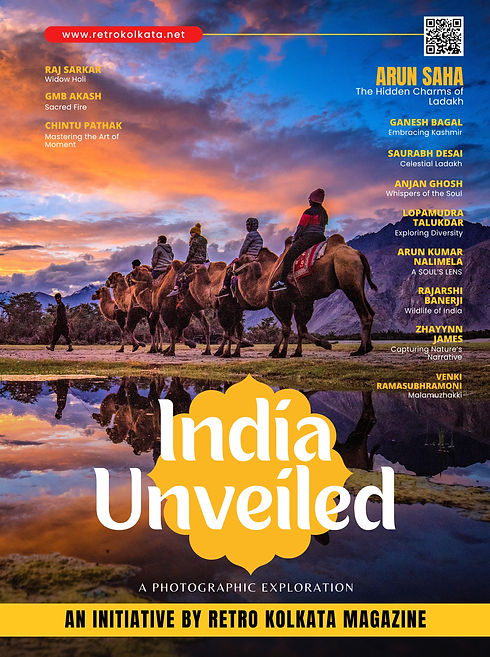
Once I drove from Pune to Kerala, just to attend the Temple Festival, and to get on the elephant. But today when I see the chained elephants, I get a different feeling. I have seen 30-40 elephants roaming freely in Jim Corbett National Park. But when I see them chained, it makes me sad. This is the biggest lesson wildlife photography taught me – it has changed my perspective! Now I am able to connect with nature and its inhabitants because of my photography.

RK : First of all, thank you for accepting our invitation for an interview as our Guest Photographer. Let’s have a jump into the past. When did you first know that you wanted to be a photographer and how did you go about pursuing this dream?
Subhash Nair : By 2005, travelling became an obsession for me. As driving has been one of my passions, I started going for long drives from one place to another. At that time I didn’t have a camera. I became obsessed with the beauty of the places I travelled to and whatever I saw during these trips. I realized the necessity of a good camera, so that I could capture and preserve beautiful moments and memories. I contacted my friend in the UK and with his help I bought my first DSLR Canon D400 camera and that’s how it all started.
RK : Have you had any formal photography training and if not how did you get to where you are today?
Subhash Nair : No, I am a self taught Wildlife Photographer, but I have traveled with some of the well known photographers in India and got inspired from many through their photographs. That has helped me a lot to improve in this field.

RK : Why did you choose wildlife photography in particular?
Subhash Nair : Nature and its creatures are so amazing. We get to learn a lot from them and capturing them in their own natural habitat gives me happiness. I think people who don’t love nature and wildlife cannot love anything.

RK : Can you tell us about the most memorable wildlife photo you have ever shot and what made it so special?
Subhash Nair : All trips are memorable for me, but I will never forget a trip to Tadoba in 2013-14. On my last safari, on my birthday - November 9, I was lucky to spot a mother tigress and her two cubs and got a chance to photograph them for almost 45 minutes.

RK : What’s your go-to gear setup when out in the field?
Subhash Nair : I love to capture the subject within its habitat. I usually carry a Nikon D850 body with a 400mm (2.8) and a couple of other wide angle lenses . But it again depends on the location I am visiting. I use my mobile to capture pics, a lot as well.

RK : What are your top tips for capturing wildlife in its natural habitat?
Subhash Nair : One should know and understand the behavior of the animal you are going to shoot. If you don’t know that, then things might completely mess up. So to become a wildlife photographer one should know the basic behavior of wildlife animals.

RK : What are the main challenges that you face as a wildlife photographer?
Subhash Nair : I honestly have not faced any challenges other than financial issues, as yet. Wildlife photography is not cheap. So once you decide to take it up to the next level, you will end up spending a lot on gears, trips, etc.
RK : What animal would you most like to capture that you haven’t already?
Subhash Nair : There are many in the list - Gelada Baboons, Lemurs, Polar Bear the list is long.

RK : What do you love most about your work as a wildlife photographer?
Subhash Nair : I learned a lot in my life after starting wildlife photography.
Once I drove from Pune to Kerala, just to attend the Temple Festival, and to get on the elephant. But today when I see the chained elephants, I get a different feeling. I have seen 30-40 elephants roaming freely in Jim Corbett National Park. But when I see them chained, it makes me sad. This is the biggest lesson wildlife photography taught me – it has changed my perspective! Now I am able to connect with nature and its inhabitants because of my photography.

RK : Where in the world is your favourite place to capture wildlife and why?
Subhash Nair : I love all the places, but recently I have built a special connection with Masai Mara in Kenya. This African Savannah is the Mecca of Wildlife.

RK : What advice would you give to young photographers who are just starting out and considering pursuing a career in wildlife photography?
Subhash Nair : When starting out as a nature photographer, you should also make sure to gain income from another source, as you won’t be able to make a lot of money until you are established in the field.

RK : Any upcoming projects you’d like to share?
Subhash Nair : Yes, a couple of trips are on the cards. One, to Borneo in Indonesia and the second one to Madagascar.
Follow Subhash Nair on Instagram
.png)




















